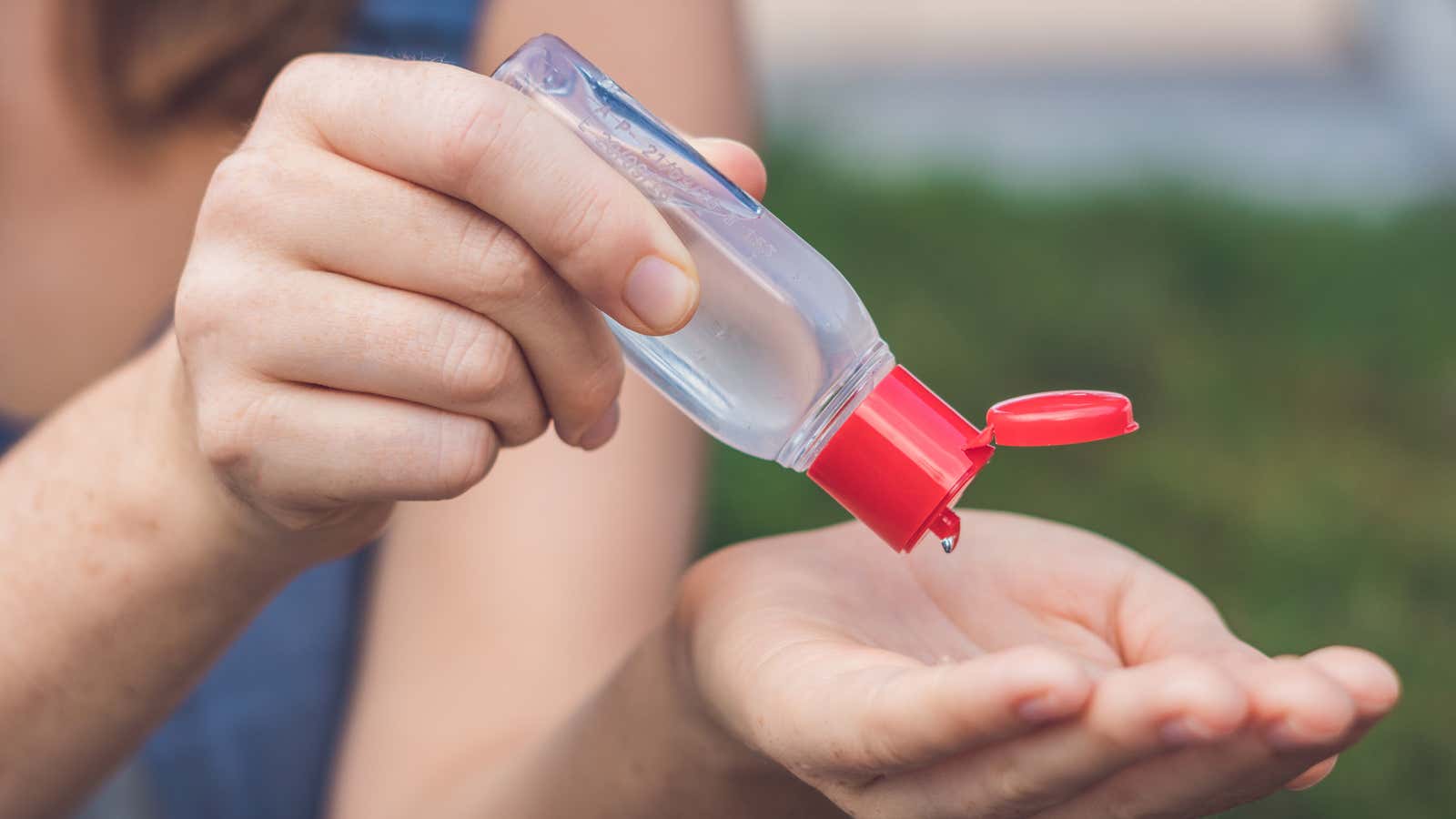Just Because You Can Make Hand Sanitizer Yourself Doesn’t Mean You Should

Hand sanitizer is sold all over the place. It’s just a fact of life right now. But there are many recipes that you can do yourself, so I decided to test them. And then I ran into problems.
There is no guarantee that DIY recipes will actually work.
The World Health Organization’s guidelines are clear: Hand sanitizers with at least 60% alcohol are an acceptable way to disinfect your hands if you don’t have access to soap and water. So you just need to mix alcohol with something else in a 60:40 ratio, right? (In most recipes, this other ingredient should be aloe vera gel.)
Unfortunately, there are some problems. First, experts note that it is easy to spoil the recipe. You may be measuring it incorrectly, or using the wrong alcohol concentration, for example, or maybe you are following a recipe that looks good on the Internet but does not actually result in the correct alcohol concentration.
Secondly, rubbing alcohol is very corrosive to the skin. A DIY sanitizer won’t be as sticky and moisturizing as a fresh bottle of Purell because there’s a reason companies like Purell spend time and money developing the right formula for every product. As one pharmacist tweeted , it’s not easy.
There is an official recipe for hand sanitizer approved by the World Health Organization , which must be made by pharmacists in countries where medical supplies are difficult to find or have run out of supplies. It differs greatly from most of the recipes you find on the Internet in several ways:
- It requires hydrogen peroxide to kill spores that may be present in ingredients or on equipment before you start.
- He doesn’t recommend adding perfume or dyes unless you’re sure they’re not likely to cause irritation or allergies (many homemade recipes require essential oils, but essential oils aren’t always safe for the skin ).
- It provides instructions on how to measure your alcohol content after you are done to make sure it is mixed correctly and that too much alcohol has not evaporated during the process.
- It instructs the bottles to be “quarantined” for 72 hours so that the freshly prepared gel can kill any bacterial spores that might get inside.
If you’re willing to do all of the above and follow the directions carefully, I suppose you could make your own hand sanitizer. But why?
DIY hand sanitizer just doesn’t make sense
I decided I would try the recipe anyway. I headed to Target intending to buy some aloe gel, rubbing alcohol and maybe some glycerin to try the WHO version.
I was browsing the shelves for aloe gel when, no kidding, I heard two employees stacking shelves nearby and discussing this very topic. It was something like this:
“… [someone] said you can make your own with aloe vera gel and vodka! I said I’ll drink vodka! “
(They laughed.)
“Why can’t you use [medical] alcohol?”
“You can! But we don’t have that either.”
Well, that’s enough for that. It turned out that Target was free of alcohol and hydrogen peroxide, and no hand sanitizer.
(By the way, don’t use vodka. Not only is it more expensive than rubbing alcohol, it’s also half as weak and won’t work for DIY hand sanitizer recipes. This lady had the right idea: vodka is for drinking.)
So here’s a question for you if you are thinking of making your own hand sanitizer. Why not just … wash your hands? Sure, sanitizer is a handy temporary alternative when you’re not near the sink, but is the sketchy DIY version really better? This may not actually work and will probably dry out your hands a lot.
Except in very special circumstances (you are in the desert, but surrounded by crowds of people, but you also do not have obviously dirty hands), you can probably just go to the bathroom again to wash your hands.
Good news: Every store I checked had hand sanitizer removed from the shelves, but hand soap was always plentiful.